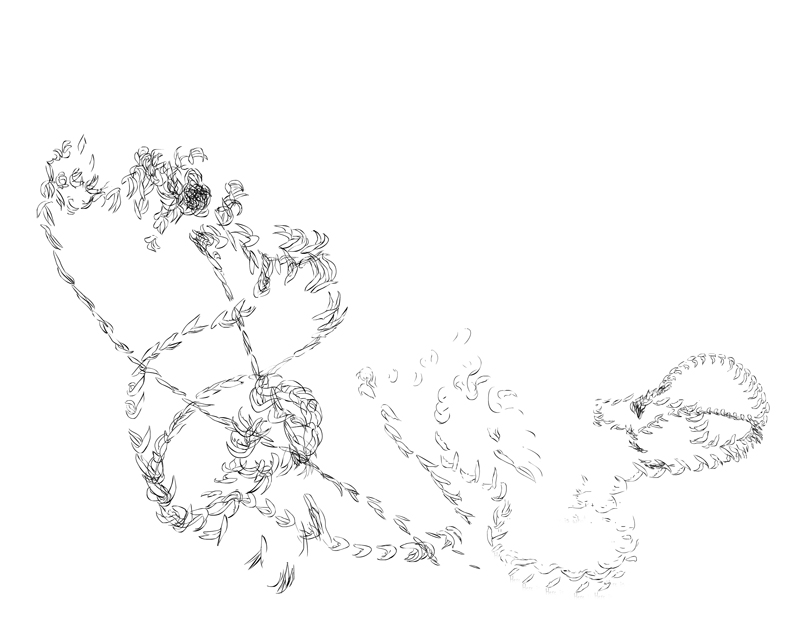Living Data
Big Picture Story 03:
Balancing Green and Animal life
The interaction of evolving Life and the Environment over about 3.7 billion years has changed the 20km deep zone of atmosphere, oceans, land and lithosphere that harbours Life and has made Earth Life-friendly for Life-as-we-know-it. The networks and feed-back links that developed between all living things and their environments had become so complex that everything became inter-connected and inter-dependent to a point where the living zone - The Biosphere was operating like a huge symbiotic super-organism. By the time humans evolved, this super-organism had the characteristics that made it suitable for the sorts of ecosystems of our modern world. Lovelock and Margulis have named it GAIA. (Throughout the geological periods leading to this time, the balancing mechanisms resulting from the interconnectedness of life and environment of those times maintained conditions within parameters suitable for those biotas.) In order for the Biosphere to function satisfactorily at any time balance has to be maintained between Green life and Animal Life (in particular).
Dr Mary E. White 2012
Lisa RobertsAnimation 2011
Data: So Kawaguchi
Music: Graeme Ewing

Lisa RobertsAntarctic krill (Euphausia superba Dana) Drawing 2011. Lines drawn from the animationKrill sex made with data collected by So Kawaguchi.
The euphausiid crustacean, Antarctic krill (Euphausia superba Dana), is reputed to have the largest biomass of any single metazoan species on the planet, playing a key role in the structure and function of the Southern Ocean ecosystem. Antarctic krill serve as both important grazers and critical prey for whales, seals and seabirds (Everson, 2000). Krill are one of the best-studied species of pelagic animals, yet there are still considerable uncertainties about key elements of their biology with few published accounts of their in situ behaviour (Nicol, 2006). Reproductive behaviour, in particular, is poorly described. There are very limited descriptions of mating behaviour for this, or any of the 85 species of euphausiid, either in the field or the laboratory (Ross and Quetin, 2000). The only reported observation of reproductive behaviour made in the wild is by Naito et al. (Naito et al., 1986), who photographed mating behaviour of the surface swarms of Antarctic krill from the deck of a research vessel. Part of reproductive behaviour has also been reported in captive krill with observations of male krill chasing gravid female krill and making brief contact (Ross et al., 1987).
Here, for the first time, we report the entire sequence of mating behaviour of Antarctic krill in the wild captured on underwater video and then traced and interpreted using digital animation. This imagery at the same time provides evidence that mating behaviour can take place near the seafloor at depths of 400 - 700 m.
The traditional view of krill reproduction is that they mate and lay eggs in the surface layer (0 - 200 m). The embryos subsequently sink, then hatch at depths of 700 - 1000 m (Ross and Quetin, 1984) and the developing larvae actively swim upwards, reaching the surface in autumn (the "developmental ascent", Marr,1962). There is, however, growing evidence of krill inhabiting much deeper water (Kawaguchi et al., 1986; Gutt and Seigel, 1994; Clarke and Tyler, 2008), and our current observations reinforce the importance of the ocean bottom as a habitat for krill. In this paper, we first describe the entire process of krill mating behaviour, and second, discuss the implication of our observation of this process occurring at the ocean floor.
Introduction, Ocean-bottom krill sex
Published: 2011 Journal of Plankton Research.
DOI: 10.1093/plankt/FBR006.
Authors: Kawaguchi, S., Kilpatrick, R., Roberts, L.,
King, R.A. and Nicol, S.
Artist Lisa Roberts worked with scientists investigating the life of Krill deep in the ocean. Lisa Roberts' drawings, based on a very blurry video from the bottom of the ocean, articulates what she could see. She focused on understanding the 'dance' to the point that she could draw and then animate it. Lisa was not illustrating something scientists already knew. Rather by working with scientists, her drawing and animation skills enabled everyone to understand something no-one hitherto knew. She ended up as co-author of a paper in the Journal of Plankton Research. The web site Antarctic Animation also demonstrates the to-and-fro of dialogue between artist and scientist working out what's going on.
eco/art/Scot/land March 22, 2011
That krill have sex at all may be news to many people. That they do it on the ocean floor is new knowledge. Scientist So Kawaguchi, from the Australian Antarctic Division, identified the mating dance of Antarctic krill, Euphausia superba, captured on an underwater video system. This new knowledge will be used to better manage fishing within the delicately balanced Antarctic ecosystem.

Andrea Juan. Invisible forest 2008. Antarctic performance-installation. Data: Rodolfo del Valle, geologist, Universidad de Buenos Aires.
Lisa Roberts.Homeostasis 2011
Story: Andrew Constable
Dance: Catherine Magill
Scientist Andrew Constable builds models to predict changes in Earth systems. I ask "Is everything connected?" Performance artist Catherine Magill practices "Authentic movement", where a dance evolves as if spontaneously from internal impulses. This seems like "straight-ahead" animation, where a story emerges from the act of drawing frame after frame. Is this like how a scientist "thinks poetically", seeing patterns in data that allow for new hypotheses (stories)?
Homeostasis: "Typically used to refer to a living organism, the concept came from that of milieu interieur that was created by Claude Bernard and published in 1865. Multiple dynamic equilibrium adjustment and regulation mechanisms make homeostasis possible." en.wikipedia.org/wiki/Homeostasis











